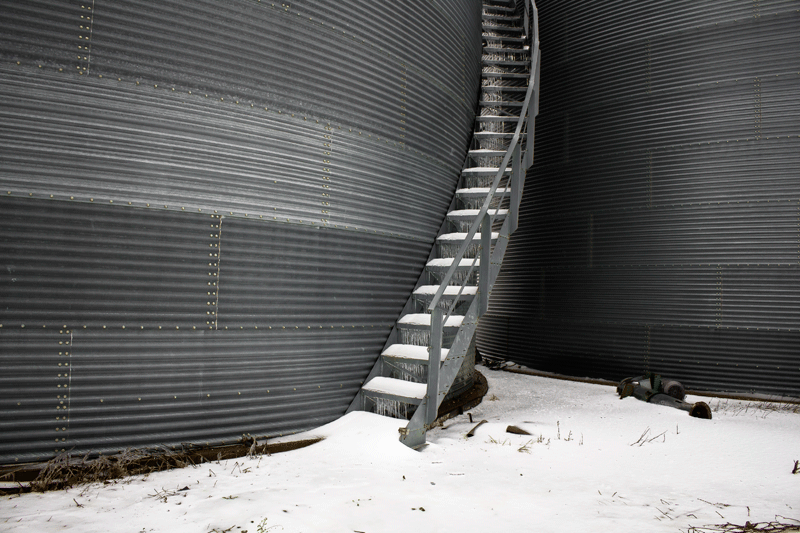Under ice and snow
GRAIN BIN WINTER SAFETY
GRAIN BINS ARE hazardous. It’s a blunt statement often repeated by grain storage safety experts. Most farmers practice basic safety precautions when dealing with bins, such as using fall restraint systems and locking out the power when inside the bin. However, they might not be as familiar with season-specific dangers and the safety precautions needed to address them.

Winter weather can create several problems for grain storage. Cold temperatures, snow, freeing rain, and ice can result in hazardous conditions inside and outside of the bin.
OUTSIDE THE BIN
“On the bin’s exterior, snow loads and ice on the roof of older bins, as well as iced-over vents and exhaust fans can cause structural and ventilation problems,” says Dr. Carol Jones, an engineer and associate professor of stored products engineering at Oklahoma State University.
It’s a problem Wayne Brubacher, director of sales and service at Horst Systems, an Ontario provider of grain handling equipment, tells his customers to watch for.
Ice can build up around roof vents, creating the potential for leaking if the vent isn’t sealed properly. Vents can also freeze-up (especially on in-bin dryers) which can create roof damage when the fan is turned on.
“If there is ice or snow build-up in your fan, then turning it on while it is frozen can cause the fan to go out of balance or if the fan blade has fins they can break right off,” says Brubacher.
Farmers working around the exterior of bins also need to be cautious, Brubacher says. “If the bin has an outside ladder or staircase, ice can build up on the ladder rungs or steps, causing a slip hazard. This makes them extremely dangerous to use.”
INSIDE THE BIN
Inside the bin, there could be problems related to moisture content and cold temperatures.
Frozen grain occurs when corn is stored with a moisture content that is too high. It can result in corn kernels freezing together or the formation of a frozen grain bridge when the grain is unloaded.
“If the grain was put in the bin at proper moisture content, there should be little problem or reason to enter the bin,” says Jones. “If moisture content is correct, grain bridges due to frozen grain are rare, but it’s a good reason to make sure venting and exhaust fans are clear and working properly.”
Grain is also cooled to reasonable temperatures to control insects and maintain grain condition. According to Jones, from an insect perspective, there’s no reason to attempt to cool grain to below 4 C.
“At 4 C, insects become totally inactive, along with most other microorganisms that would cause problems. Above 4 C, insects don’t reproduce and do very little feeding but they are still somewhat active in their growth cycles. Unless farmers are aerating with cold air, the grain will most likely stay above freezing for most of the winter.”
In the winter, cold air outside the bin cools the grain along the walls of the bin. This creates water vapour, which migrates into the grain mass. As it reaches the warmer centre, it migrates upward and condenses when it reaches the cooler top surface. The top of the bin is where spoilage and other problems occur. This condensation process can result in frozen access points and ice on the roof.
Frozen grain can also cause problems with the formation of condensation in the spring as the grain thaws. To help avoid problems with condensation, grain should be cooled while in storage in the fall, and the bin should have adequate exhaust vents. If outside air is warmer than that in the bin, fans should not be run as it would increase the chance of freezing. However, if the grain begins to heat or go out of condition, freezing becomes a secondary concern, and aeration fans should run regardless of temperature until the problem is corrected.
Winter can be a challenging time for farmers, and it’s important that they consider how the weather can impact their grain as well as their working conditions to prevent any losses or increased work in the spring. •






















